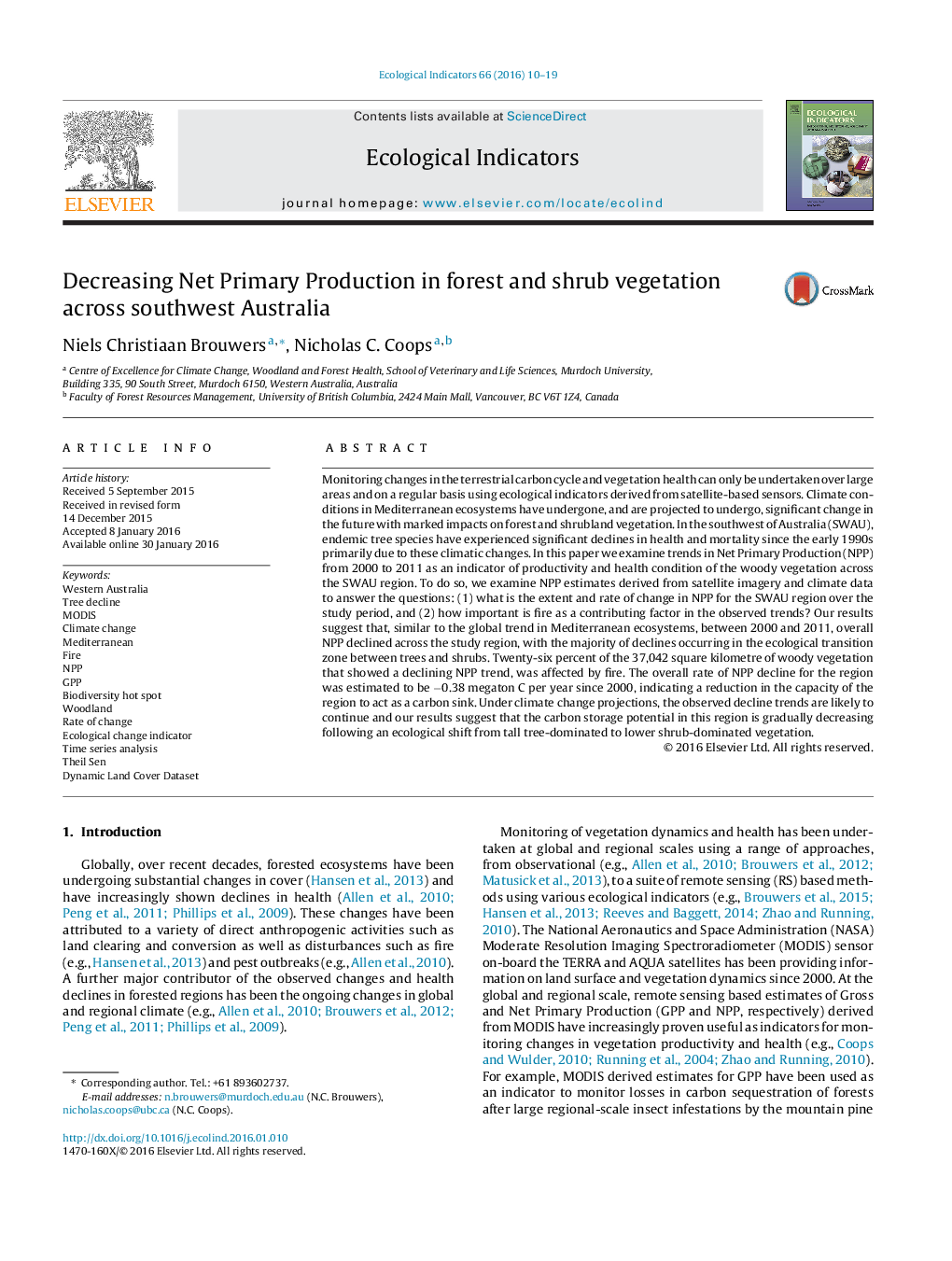| کد مقاله | کد نشریه | سال انتشار | مقاله انگلیسی | نسخه تمام متن |
|---|---|---|---|---|
| 6293402 | 1617136 | 2016 | 10 صفحه PDF | دانلود رایگان |
- Since 2000, woody vegetation productivity is decreasing in southwest Australia.
- 37,042 square kilometre of woody vegetation showed a declining NPP trend.
- Fire contributed to 26% of the observed declines.
- The ecological transition zone between trees and shrubs showed most declines.
- MODIS NPP is a valuable indicator of productivity and health at large spatial scales.
Monitoring changes in the terrestrial carbon cycle and vegetation health can only be undertaken over large areas and on a regular basis using ecological indicators derived from satellite-based sensors. Climate conditions in Mediterranean ecosystems have undergone, and are projected to undergo, significant change in the future with marked impacts on forest and shrubland vegetation. In the southwest of Australia (SWAU), endemic tree species have experienced significant declines in health and mortality since the early 1990s primarily due to these climatic changes. In this paper we examine trends in Net Primary Production (NPP) from 2000 to 2011 as an indicator of productivity and health condition of the woody vegetation across the SWAU region. To do so, we examine NPP estimates derived from satellite imagery and climate data to answer the questions: (1) what is the extent and rate of change in NPP for the SWAU region over the study period, and (2) how important is fire as a contributing factor in the observed trends? Our results suggest that, similar to the global trend in Mediterranean ecosystems, between 2000 and 2011, overall NPP declined across the study region, with the majority of declines occurring in the ecological transition zone between trees and shrubs. Twenty-six percent of the 37,042 square kilometre of woody vegetation that showed a declining NPP trend, was affected by fire. The overall rate of NPP decline for the region was estimated to be â0.38 megaton C per year since 2000, indicating a reduction in the capacity of the region to act as a carbon sink. Under climate change projections, the observed decline trends are likely to continue and our results suggest that the carbon storage potential in this region is gradually decreasing following an ecological shift from tall tree-dominated to lower shrub-dominated vegetation.
300
Journal: Ecological Indicators - Volume 66, July 2016, Pages 10-19
